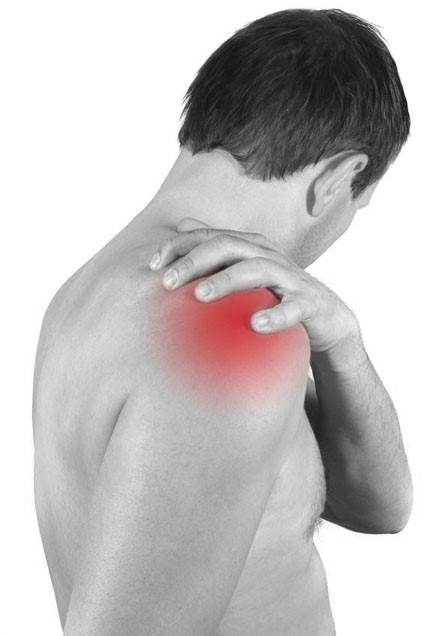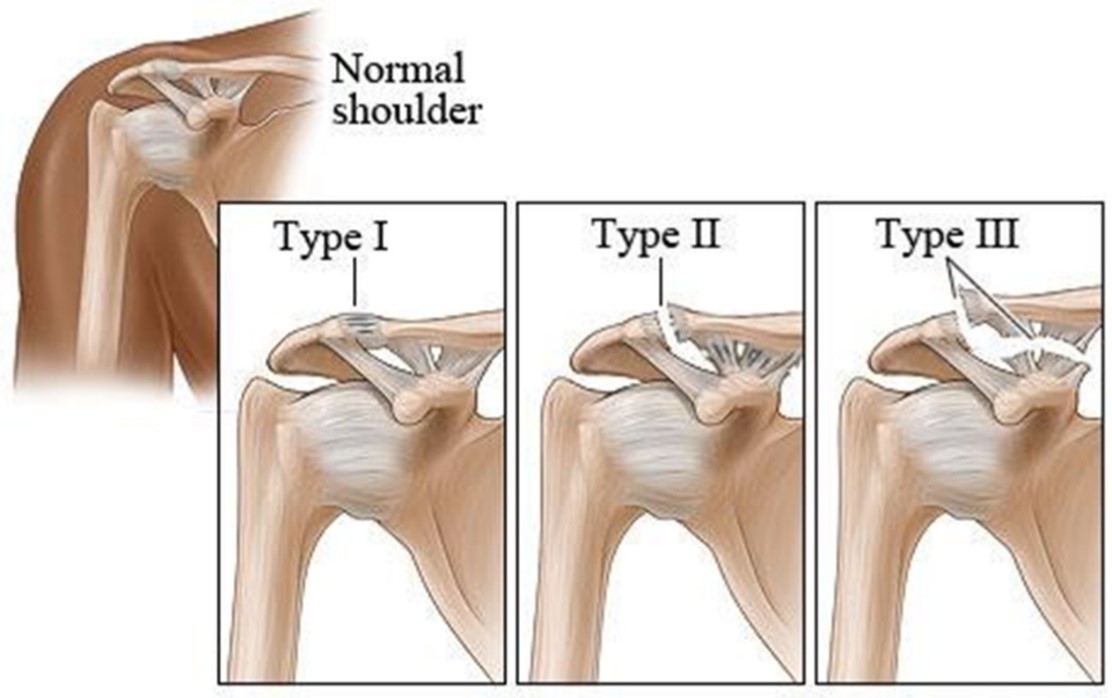Shoulder Sprains
Shoulder sprains are painful injuries that can occur from a fall or traumatic injury. If you think you may have suffered a shoulder sprain, Dr. Lawrence Li and the staff at the Orthopedic and Shoulder Center can help you. Dr. Li is a Board-Certified orthopedic surgeon and is experienced in treating all kinds of shoulder sprains.
Background
The shoulder region consists of the glenohumeral joint and the acromioclavicular (AC) joint. The us tissue called the glenohumeral (GH) ligaments. These ligaments form a joint capsule around the joint. The shoulder socket also has a ring of cartilage around it called the labrum that helps stabilize the humerus. The AC joint is where the top of the shoulder blade meets the collarbone, or clavicle. The collarbone and shoulder blade are connected by two tough bands of fibrous tissue called the acromioclavicular (AC) ligament and the coracoclavicular (CC) ligament.
us tissue called the glenohumeral (GH) ligaments. These ligaments form a joint capsule around the joint. The shoulder socket also has a ring of cartilage around it called the labrum that helps stabilize the humerus. The AC joint is where the top of the shoulder blade meets the collarbone, or clavicle. The collarbone and shoulder blade are connected by two tough bands of fibrous tissue called the acromioclavicular (AC) ligament and the coracoclavicular (CC) ligament.
Shoulder sprains can occur in these two joints. If the GH, AC, or CC ligaments are put under stress, they can stretch, partially tear, or fully tear. The labrum can also tear when put under stress. This causes pain and inflammation in the shoulder or at the far end of the collarbone. Shoulder sprains can also cause decreased range of motion and pain when moving or shrugging the shoulder. If the ligaments are fully torn, the collarbone can become dislocated, which appears as a bump near the shoulder. The shoulder can also feel unstable, as if it is going to “slip out” of place.
The AC and CC ligaments are very strong, so it takes a lot of force to damage them. The most common causes of shoulder sprains result from high velocity impacts on the shoulder, such as during a car accident, a fall, or a slip on ice. Athletes in contact sports such as football or wrestling are also at risk of shoulder sprains.
Grades of Shoulder Sprains
AC shoulder sprains are categorized into different grades based on the severity of the injury. Grade 1 sprains can result from a stretched or partially torn AC ligament and a  stretched CC ligament. These injuries cause pain, inflammation, and difficulty moving the shoulder. Grade 2 injuries result from a fully torn AC ligament and a partially torn CC ligament. Because the CC ligament is still partially intact, the bones do not separate. These injuries typically cause more pain than Grade 1 injuries. In Grade 3 injuries, the AC and CC ligaments are fully torn, and the collarbone moves away from the shoulder blade. These injuries can cause more severe bruising, swelling, and loss of motion than lower grade injuries.
stretched CC ligament. These injuries cause pain, inflammation, and difficulty moving the shoulder. Grade 2 injuries result from a fully torn AC ligament and a partially torn CC ligament. Because the CC ligament is still partially intact, the bones do not separate. These injuries typically cause more pain than Grade 1 injuries. In Grade 3 injuries, the AC and CC ligaments are fully torn, and the collarbone moves away from the shoulder blade. These injuries can cause more severe bruising, swelling, and loss of motion than lower grade injuries.
In the glenohumeral joint, an injury to the GH ligament can result in a humeral avulsion of the glenohumeral ligament (HAGL). In a HAGL, the GH ligament pulls away from the head of the humerus. This can make the shoulder feel unstable which can lead to dislocation.
Diagnosis
If you think you may have a sprained shoulder, make an appointment to see an orthopedic surgeon. Diagnosis of shoulder strains starts with a physical exam of both the injured and uninjured shoulder. In some cases, patients may need an X-ray, ultrasound, or MRI to help diagnose the cause of their shoulder pain. The Orthopedic and Shoulder Center offers all of these useful diagnostic technologies in one location.
Treatment
Low grade shoulder strains can usually be treated with anti-inflammatory drugs, ice, and rest. In some cases a sling may also be necessary. For higher grade strains, especially with more displacement of the collarbone or dislocation of the shoulder, surgery may be necessary to reconstruct the GH, AC, or CC ligaments.
If you have suffered an injury to your shoulder, make an appointment with orthopedic specialist Dr. Lawrence Li. With over 30 years of experience treating patients from Bloomington, Normal, and all of Central Illinois, Dr. Li is an expert at providing minimally invasive care for all kinds of shoulder, meniscus, knee, and other orthopedic injuries.
